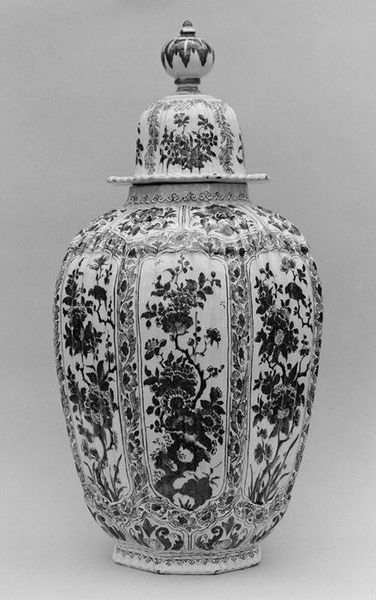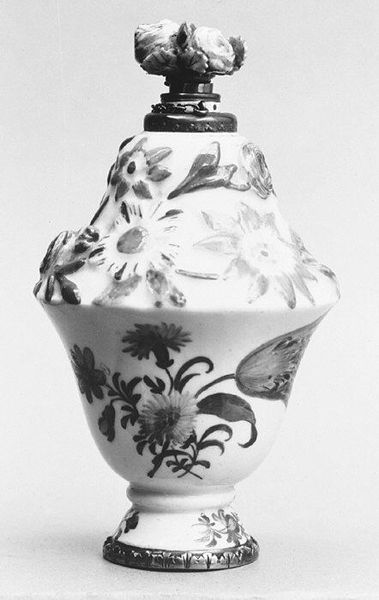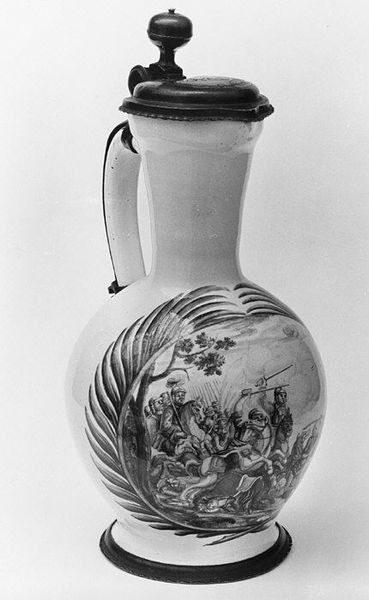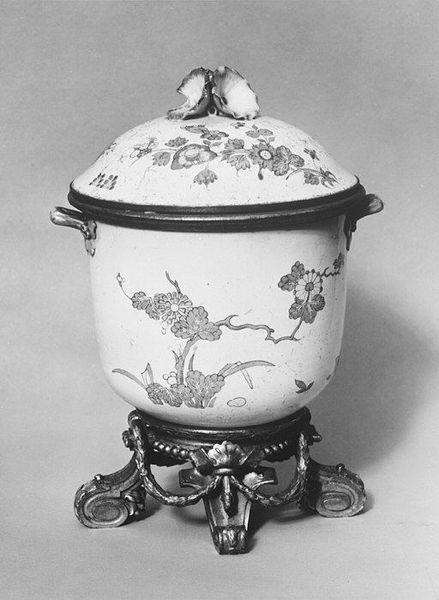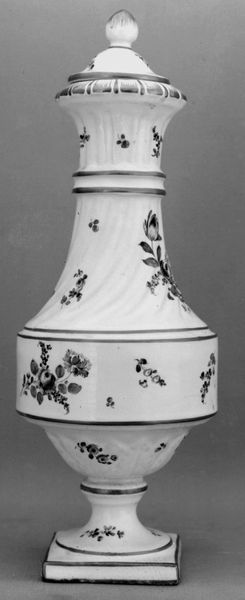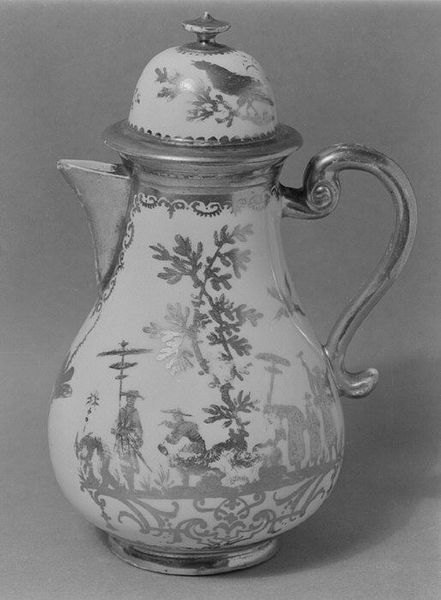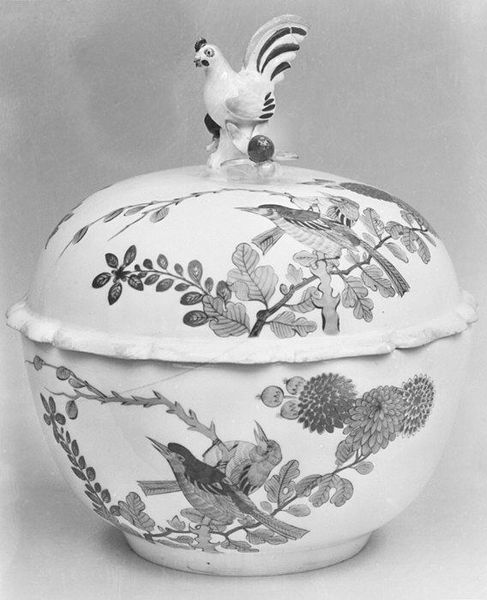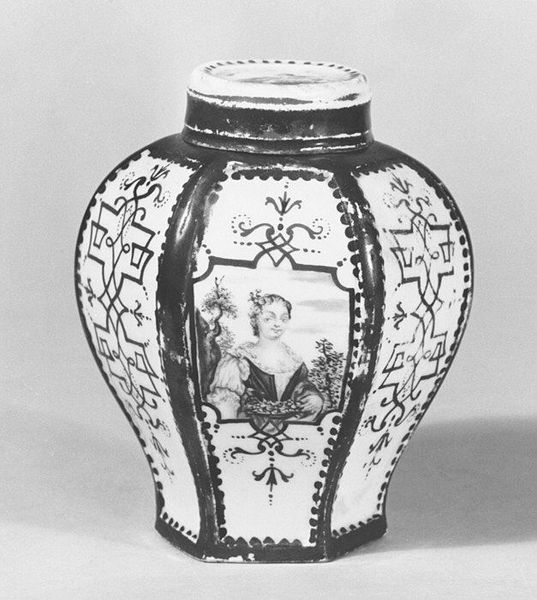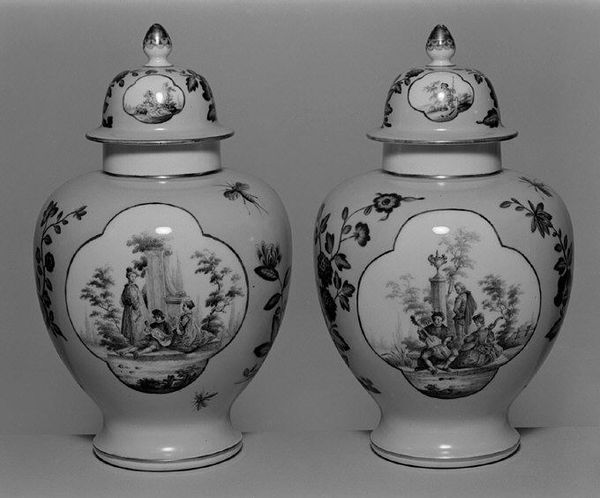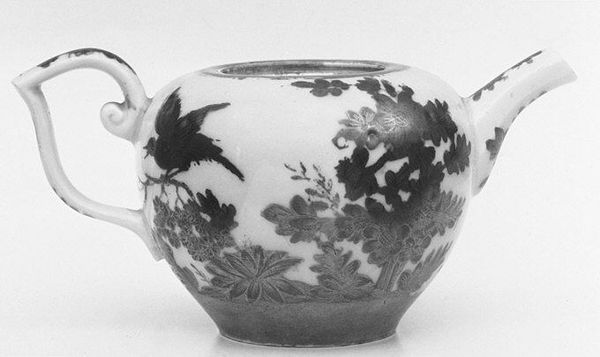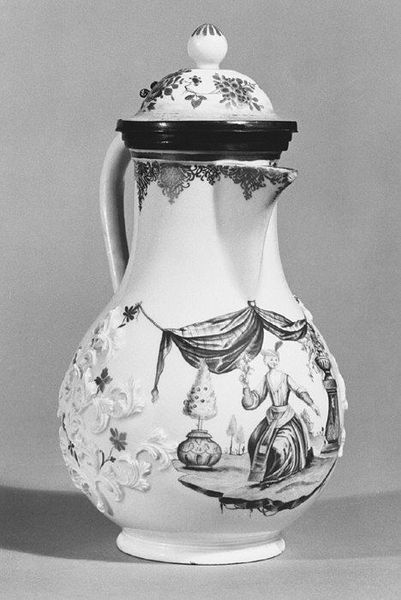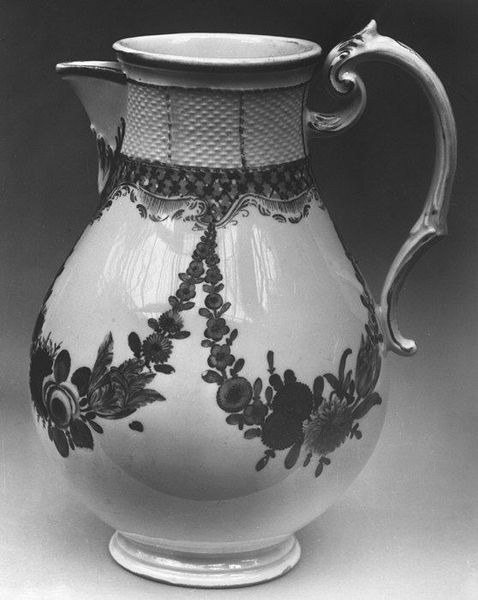
ceramic, porcelain, sculpture
#
ceramic
#
bird
#
flower
#
porcelain
#
sculpture
#
decorative-art
#
rococo
Dimensions: Height: 13 in. (33 cm)
Copyright: Public Domain
Editor: Here we have the “Vase with Cover” made between 1749 and 1758, by Höchst Manufactory. It's a porcelain sculpture. The delicate decoration and elegant shape give it a formal air, almost aristocratic. How do you interpret this work? Art Historian: Porcelain itself is a powerful signifier, originating in China and carrying a legacy of wealth and exclusivity in 18th-century Europe. What strikes me is how the vase merges both European Rococo and Asian-inspired design. Do you see how the birds and flowers aren't just decorative, but symbolic? Editor: I noticed the flowers, but I didn’t think of them being more than just pretty. Are the birds important too? Art Historian: The Rococo style favored asymmetry and nature. Here, the flowers likely allude to abundance and ephemeral beauty, fitting for the aristocracy. The birds can often represent freedom or even a messenger between worlds. Combined, they speak to a specific desire of the elites, namely harmony and power, especially if this piece would have sat in a grand interior. Editor: So it’s not just a beautiful vase, it’s making a statement about the owner's values and social position through coded images? Art Historian: Exactly. It’s a container, yes, but more importantly, it contains and communicates aspirations and social meanings. Even the lid on top seals that meaning, setting apart something special. Editor: That's fascinating. I'll never look at decorative art the same way again. Thanks for pointing out the symbolism; it adds a whole new layer. Art Historian: Indeed. Visual symbols encode collective desires and historical trajectories within each artistic act. It opens us up to how each interacts with culture and self.
Comments
No comments
Be the first to comment and join the conversation on the ultimate creative platform.
